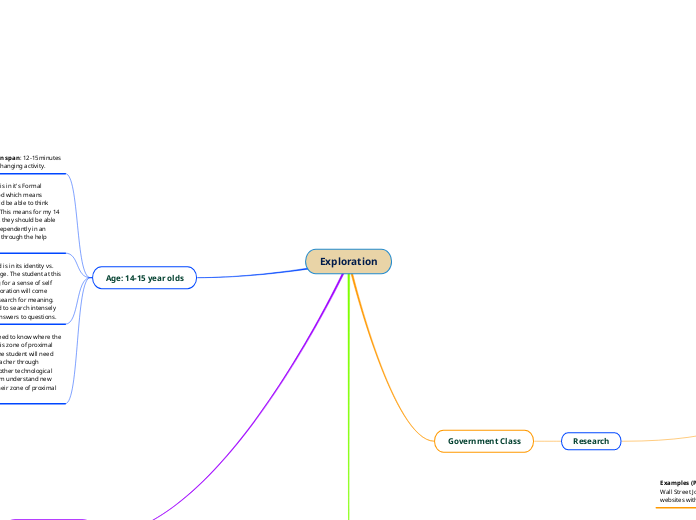Exploration
Age: 14-15 year olds
Attention span: 12-15minutes
without changing activity.
Piaget: the child is in it's Formal
operational period which means
the student should be able to think
more abstractly. This means for my 14
and 15 year olds, they should be able
to think more independently in an
abstract manner through the help
of scaffolding.
Erickson: the child is in its identity vs.
role confusion stage. The student at this
stage is searching for a sense of self
which means exploration will come
naturally as they search for meaning.
They are expected to search intensely
as they seek for answers to questions.
Vygotsky: we need to know where the
student is at in his zone of proximal
development. The student will need
help from the teacher through
scaffolding and other technological
tools to help them understand new
information in their zone of proximal
development.
Gender (will be
a mixed class)
Boys: will require more
opportunities to move
around. Activities need
to have some degree of
competition for them to
be engaged. Moderate
stress is enabling.
Girls: need for social
interaction and interaction
with peers as well as the
teacher. Excessive stress
may also be debilitating.
Government Class
Research
Finding Reliable sources
Defining features of reliable sources:
Prototype:
Peer Reviewed Journals
Examples (Positive instances):
Wall Street Journal, Pew Research,
websites with .gov
Non-examples (negative instances):
blog posts, wikipedia
Misconception:
Overgeneralization:
"Wikipedia had correct
information once. This
means it is guaranteed to
have correct information
when researching my paper."
Undergeneralization:
"Wall Street Journal has all
the features that define a
reliable source. This means
it is the only reliable source
out there."
Depth
Objectivity
Accuracy
Currency
Authority
Purpose
Correlational Features
Primary sources,
secondary sources,
well reasoned arguments
unbiased...
Cross curricular ties
Language Arts:
Intertexualityundefined
Science:
Geologic feature
mapping
Math:
Proof and Paradox
